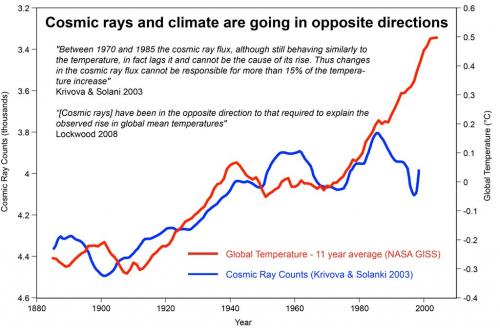 Arguments
Arguments
 Software
Software
 Resources
Comments
Resources
Comments
 The Consensus Project
The Consensus Project
 Translations
Translations
 About
Support
About
Support


Latest Posts
- Skeptical Science New Research for Week #16 2025
- Climate Adam: Climate Scientist Reacts to Elon Musk
- Sabin 33 #24 - Is wind power too expensive?
- EGU2025 - Picking and chosing sessions to attend on site in Vienna
- 2025 SkS Weekly Climate Change & Global Warming News Roundup #15
- Fact brief - Is the sun responsible for global warming?
- Skeptical Science New Research for Week #15 2025
- Renewables allow us to pay less, not twice
- Sabin 33 #23 - How much land is used for wind turbines?
- Our MOOC Denial101x has run its course
- 2025 SkS Weekly Climate Change & Global Warming News Roundup #14
- Fact brief - Is Mars warming?
- Skeptical Science New Research for Week #14 2025
- Two-part webinar about the scientific consensus on human-caused global warming
- Sabin 33 #22 - How does waste from wind turbines compare to waste from fossil fuel use?
- Clean energy generates major economic benefits, especially in red states
- 2025 SkS Weekly Climate Change & Global Warming News Roundup #13
- Skeptical Science New Research for Week #13 2025
- Climate skeptics have new favorite graph; it shows the opposite of what they claim
- Sabin 33 #21 - How does production of wind turbine components compare with burning fossil fuels?
- China will need 10,000GW of wind and solar by 2060
- 2025 SkS Weekly Climate Change & Global Warming News Roundup #12
- Skeptical Science New Research for Week #12 2025
- Climate Fresk - a neat way to make the complexity of climate change less puzzling
- Sabin 33 #20 - Is offshore wind development harmful to whales and other marine life?
- Do Americans really want urban sprawl?
- 2025 SkS Weekly Climate Change & Global Warming News Roundup #11
- Fact brief - Is waste heat from industrial activity the reason the planet is warming?
- Skeptical Science New Research for Week #11 2025
- Visualizing daily global temperatures
Cosmic Rays and Climate moving in opposite directions

The Galactic Cosmic Ray (GCR) hypothesis is a "skeptic" argument that global warming is caused by periods of high solar activity when strong solar magnetic fields protect the Earth from GCRs. Some hypothesize that GCRs seed clouds and therefore fewer of them lead to less reflective clouds and more global warming, so strong solar activity with low GCR counts should correlate with increasing global temperature. This graphic debunks that myth without even needing to address the questionable hypothesis, by simply looking at the measured relationship between global temperature and GCR counts. Shown are 11-year running averages of the global average surface temperature since 1885 from NASA GISS (red) along with the GCR counts on Earth from Krivova & Solanki 2003 (blue). In recent decades when global temperature has been increasing, the GCR flux has also increased (note inverted GCR scale). Higher GCR counts should correspond to more reflective clouds and therefore global cooling rather than the observed global warming, so GCRs cannot be responsible for the observed temperature increase (also see this graphic). Similarly, direct solar activity isn't causing global warming either.
SkS Resources that use this Graphic
Images
Printable Version | Back to Graphics by Skeptical Science
|
|
Skeptical Science Graphics by Skeptical Science is licensed under a Creative Commons Attribution 4.0 International License. |
THE ESCALATOR

(free to republish)
























































